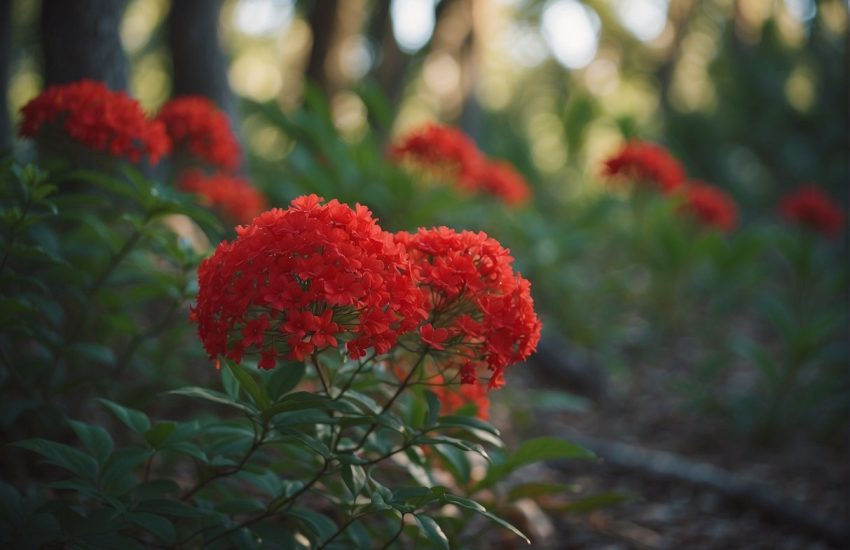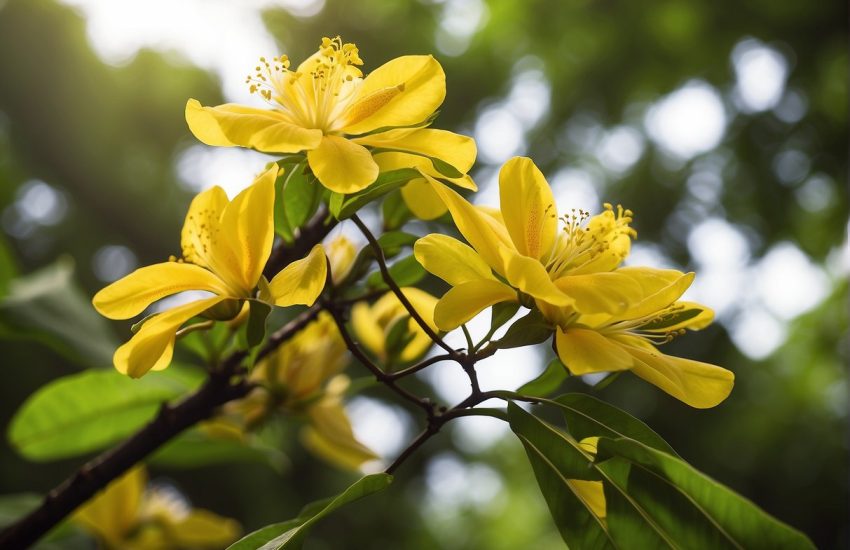Pink Flowering Trees in Indiana: A Guide to the Best Varieties for Your Garden
Pink flowering trees are a beautiful addition to any landscape, and Indiana is home to several stunning varieties. These trees bloom in shades of pink, ranging from soft pastels to vibrant magentas, and can be found throughout the state. Whether you’re a nature enthusiast, a gardener, or simply someone who appreciates the beauty of the outdoors, pink flowering trees are sure to delight.

One of the most popular pink flowering trees in Indiana is the Eastern redbud. This tree is native to the eastern United States and can be found growing in woodlands and along the edges of fields. In the spring, the Eastern redbud produces clusters of small, pinkish-purple flowers that cover the branches and trunk of the tree. As the flowers fade, heart-shaped leaves emerge, providing shade and beauty throughout the summer months.
Another beautiful pink flowering tree found in Indiana is the Yoshino cherry. This tree is native to Japan and is often planted as an ornamental tree in parks and gardens. In the spring, the Yoshino cherry produces delicate, pale pink blossoms that cover the tree in a beautiful pink haze. The blossoms are short-lived, but their beauty is unforgettable. As the flowers fall, the Yoshino cherry produces dark green leaves that turn yellow in the fall, providing a stunning display of color throughout the year.
Popular Pink Flowering Trees in Indiana

Indiana is home to a variety of beautiful pink flowering trees that can add color and interest to any landscape. Here are a few popular options to consider:
Eastern Redbud (Cercis Canadensis)
The Eastern Redbud is a small tree that produces stunning pink flowers in early spring. It is a hardy tree that can tolerate a variety of soil types and is well-suited for Indiana’s climate. The heart-shaped leaves of the Eastern Redbud turn yellow in the fall, adding a second season of interest to this beautiful tree.
Flowering Dogwood (Cornus Florida)
The Flowering Dogwood is another popular pink flowering tree in Indiana. This small tree produces clusters of pink flowers in the spring, followed by red berries in the fall. The Flowering Dogwood is a great option for shady areas and is also a favorite of wildlife, attracting birds and butterflies to your yard.
Magnolia Varieties
Magnolia trees are known for their large, showy flowers, and there are several varieties that produce pink blooms. The Saucer Magnolia and Jane Magnolia are two popular options that can thrive in Indiana’s climate. These trees are low-maintenance and can add a touch of elegance to any landscape.
Crabapple Trees (Malus)
Crabapple trees are a great option for those looking for a pink flowering tree that can also produce fruit. The Malus ‘Pink Spires’ and ‘Prairifire’ are two popular varieties that produce pink flowers in the spring, followed by small crabapples in the fall. These trees are also great for attracting wildlife to your yard.
Overall, there are many options for those looking to add a pink flowering tree to their Indiana landscape. Consider the size, soil type, and sunlight requirements of each tree before making your selection. With proper care, any of these trees can thrive and add beauty to your yard for years to come.
Cultivation and Care

Soil and Sunlight Requirements
Pink flowering trees in Indiana require well-drained soil and full sun to partial shade for optimal growth. They can tolerate a range of soil types, but prefer slightly acidic to neutral soil. If the soil is too alkaline, it can affect the tree’s ability to absorb nutrients.
Watering and Drought Tolerance
When establishing a new pink flowering tree, it is important to water it regularly until it becomes established. After that, they are relatively drought-tolerant and do not require frequent watering. However, during prolonged dry spells, it is important to water the tree deeply to ensure its survival.
Pruning and Maintenance
Pink flowering trees in Indiana require minimal pruning and maintenance. Prune only to remove dead or damaged branches or to shape the tree. It is best to prune in late winter or early spring before new growth appears. Avoid pruning in the fall as it can stimulate new growth that may not have time to harden off before winter.
Overall, pink flowering trees in Indiana are low-maintenance and easy to care for. By providing them with the right soil, sunlight, and water, they will thrive and provide beautiful blooms year after year.
Wildlife and Ecological Benefits

Attracting Pollinators
Pink flowering trees in Indiana are a great way to attract pollinators like butterflies and hummingbirds to your garden. These trees produce nectar-rich flowers that provide a valuable food source for these creatures. The pink flowers are particularly attractive to hummingbirds, which are known to be drawn to bright colors.
By planting pink flowering trees, you can help support the local ecosystem by providing a habitat for these pollinators. This, in turn, can help to promote the growth of other plants in your garden, as well as in the surrounding area.
Supporting Local Ecosystems
In addition to attracting pollinators, pink flowering trees in Indiana also provide a number of other ecological benefits. For example, they can act as a backdrop for other plants in your garden, providing a beautiful and natural setting for your outdoor space.
Pink flowering trees are also ornamental, which means that they can add value to your property. They are a popular choice for landscaping, as they are easy to grow and maintain, and can provide a beautiful display of color throughout the year.
Overall, pink flowering trees in Indiana are a great choice for anyone looking to enhance their garden and support the local ecosystem. Whether you are looking to attract pollinators or simply add some beauty to your outdoor space, these trees are a great choice.
Landscaping with Pink Flowering Trees

Pink flowering trees can add a beautiful touch to any garden landscape. With their eye-catching blooms, they can serve as a focal point and add a pop of color to any outdoor space. In this section, we will discuss some tips for designing with pink flowering trees in mind.
Designing for Visual Impact
When considering pink flowering trees for your landscaping, it’s important to think about the overall visual impact you want to achieve. Do you want a bold statement piece or a more subtle addition to your garden? Consider the size and shape of the tree, as well as the color and texture of its foliage. Some popular pink flowering trees for landscaping include the Eastern redbud, cherry blossom, and dogwood.
To create a cohesive look, try to incorporate other plants and flowers that complement the pink blooms. For example, pairing pink flowering trees with purple or white flowers can create a stunning color contrast. Alternatively, using plants with similar foliage textures can help tie everything together.
Seasonal Considerations
It’s important to keep in mind the seasonal considerations when designing with pink flowering trees. While they may look beautiful in the spring, they may not provide much interest during other seasons. To ensure year-round appeal, consider incorporating other plants and features that provide interest during different times of the year.
Additionally, it’s important to consider the maintenance requirements of your chosen pink flowering tree. Some varieties may require regular pruning or specific soil conditions to thrive. Make sure to research the specific needs of your tree before planting to ensure its success.
Overall, pink flowering trees can be a beautiful addition to any landscape. With careful consideration of visual impact and seasonal considerations, they can provide a stunning focal point and curbside appeal.


